 Abraham Lincoln
If given the truth, the people can be depended upon to meet any national crisis...
Abraham Lincoln
If given the truth, the people can be depended upon to meet any national crisis...
 Guildford news...
for Guildford people, brought to you by Guildford reporters - Guildford's own news service
Guildford news...
for Guildford people, brought to you by Guildford reporters - Guildford's own news service
More Details Emerge About Alan Turing In Guildford
Published on: 6 Sep, 2016
Updated on: 9 Sep, 2016
Details about father of computer science Alan Turing’s links to Guildford continue to grow.
Following Guildford Town Guide Paul Backhouse’s publication Alan Turing – Guildford’s best kept secret earlier this year and the recent guided walks that visit places associated with the Turing family, the exact location of one particular photo has been identified.
And this had led to a new insight into the Turing family and Alan’s time spent in Guildford.
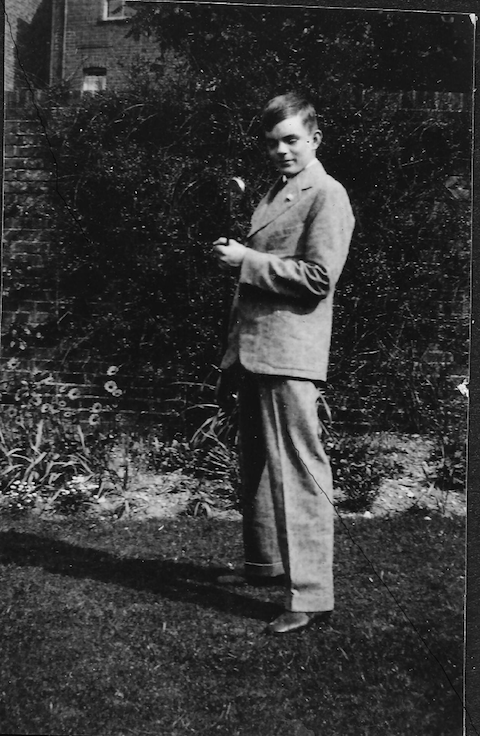
Alan Turing in a garden in Dene Road, Guildford in 1928. The exact location has now been identified as a house then occupied by the Vincent family. Alan is holding a golf club. It is known that his father was a member of Guildford Golf Club – perhaps Mr Vincent was too?
Paul takes up the story: “One photograph of Alan Turing aged 15 was identified as being taken in Dene Road, but there was no information as to exactly where. I was approached during one of the Turing Walks that someone who lived in Dene Road had a wall in their garden whose construction matched the one in the photograph. A preliminary visit showed that it was a good candidate.
“I later visited 6 Dene Road to make a more detailed examination of the wall. The wall’s construction indeed matched the one in the background of the photograph although the wall in the photograph had one more layer of bricks than the wall that we examined. However, it is entirely likely that the level of the garden next to the wall has changed in nearly 90 years. Unfortunately, the wall in the photograph is somewhat under exposed so little detail is visible that can be compared with the candidate wall. Some additional detective work was called for.
“The candidate wall was roughly one course of bricks shorter than 7ft (2.13 metres). Although Alan Turing’s height at that time is unknown he was certainly shorter than this.
“An examination of the photograph reveals that the camera position is lower than head height. This is entirely consistent with the type of cameras available in 1928. Both the box camera and the folding ‘vest’ type camera had reflex viewfinders that required the photographer to look down into the camera to see what it was pointing at. The viewpoint is waist to chest high. The perspective from such a viewpoint would account for Alan appearing the same height as the wall.
“It is necessary to turn to the background behind the wall. The building behind the wall appears very similar to the one in the photograph. Luckily, the building had what appears to be some distinctive repointing work on part of the brickwork.
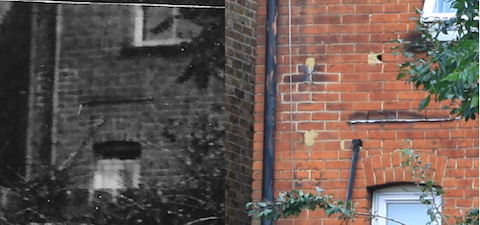
Above and below: then and now views showing the similarity of the brickwork on the building and even the shadows cast by the sun.
“Crops of the original picture are shown here with views of the brickwork on the building today on which, luckily, the repointing is still visible. It is clear that the repointing matches.
“The drainpipe has been moved from its original position, but the line of the original pipe is very obvious along with its mounting points in the modern day shot. Also the curved pediment above the window is a clear match.
“Another interesting feature is the shadow being cast on the neighbouring building. Although there is not as much of it in the original photograph, it is nevertheless a good match. It shows that my photograph was taken roughly around the same time the day (2.15pm) than the original, although the absence of the apex in the original makes it difficult to pin down. But at least the orientation is about right.
“An attempt was made to more or less recreate the image. The camera position was chosen to recreate the right perspective and the right amount of lower window visible over the wall. I am 5ft 10in (1.8m) tall, and the view point is just slightly too high. This would suggest that Alan was a couple of inches shorter, and the camera would have to be a little lower and further back (to keep the same amount of window in shot). The camera may be a little to the left or right, but not by more than a metre or so as the wall changes height to the left and right of the shot.
“Could the photograph have been taken in the neighbouring gardens? The wall between numbers 6 and 8 looks a similar age but is of a different construction. It is not impossible that it could have been rebuilt, but geometry dictates that the camera position would have to be much higher for the same amount of window to be visible in the background.
“The wall between No.4 and No.2 is of the same construction, but the garden is much narrower. Indeed too narrow to accommodate the right camera position. The equivalent wall in No.2 is at the end of the row of houses and is much taller, forming as it does, the rear wall of the garden for the house in the background of the photograph.
“The last question is: what was Alan Turing doing in the garden in the first place?”
Some research by Paul, and also Vanessa Gellett, who lives at 6 Dene Road, had led, among other facts, to know who the occupants were at the time the photo was taken.
In 1928 the house was called Bradley and it was occupied by Nathan and Sarah Ann Vincent. They leased it from local builder Francis Billimore from 1911 to 1938.
Mr Vincent owned an ironmonger’s shop in what was then 135 High Street. It was on the south side just up from Tunsgate Arch.
The Vincent’s had two children. Son Norman, was killed in First World War, and daughter Evelyn Dorothy, died unmarried in 1972.
He was born in 1860 and died in 1934 and left over £20,000 in his will (equivalent to £1.2 million today). He was also a shareholder in the Great Western Railway.
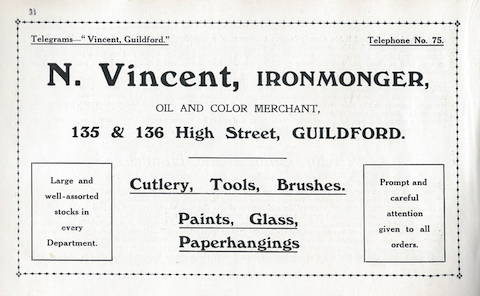
Advertisement for Vincent’s published in a guide book titled Guildford To-day and published in 1912. David Rose Collection.
From text next to a photograph of the shop in the book Vintage Guildford by Matthew Alexander, Nathan Vincent apparently went into partnership in the ironmonger’s shop with a Richard Shillingford in 1891. Vincent became the sole proprietor in 1905. The shop stood on the site of the Tuns Inn, demolished in 1818. It became Lilley and Skinner’s in 1928.
Richard Shillingford lived at 8 (formerly Stanlake) Dene Road between 1901 and 1919 and also sold the land upon which 6 Dene Road was built, to the builder Francis Billimore in 1901. In 1903 Francis Billimore used 6 Dene Road (with other land) as security for a loan from the Gospel Standard Poor Relief Society, of which Richard Shillingford was a trustee.
Francis Billimore and Nathan Vincent appear to have had more than a landlord and tenant relationship though as when Mr Billimore died, his will appointed Nathan Vincent as one of his executors.
Mr Vincent was a churchwarden at Holy Trinity. It is known that Alan Turing’s mother was a regular churchgoer. Although details are know about her worshiping at St Nicolas Church, perhaps when the family first moved to Ennismore Avenue in Guildford in 1927, she (and perhaps other family members) attended services at Holy Trinity. With Mr Vincent being a churchwarden and prominent member of the church family there, he may have welcomed the Turings into Guildford life, perhaps inviting them to his house for tea in the garden?
Many years later, there is a further connection between Alan Turing and Dene Road. In a letter that he wrote to his mother dated January 19th 1952, he says: “… should think you are probably wise to move. Dene Road not much further from the town”.
As it turned out, his mother didn’t move to Dene Road but to nearby Waterden Road in 1955.
Copies of Paul Backhouse’s excellent 24-page publication, Alan Turing – Guildford’s best kept secret cost £4.99. They can be purchased at the tourist information centre at Guildford House in the High Street and Guildford Museum in Quarry Street.
Further details about Turing Walks can be found at www.guildfordwalks.org.uk.
Responses to More Details Emerge About Alan Turing In Guildford
Leave a Comment Cancel reply
Please see our comments policy. All comments are moderated and may take time to appear. Full names, or at least initial and surname, must be given.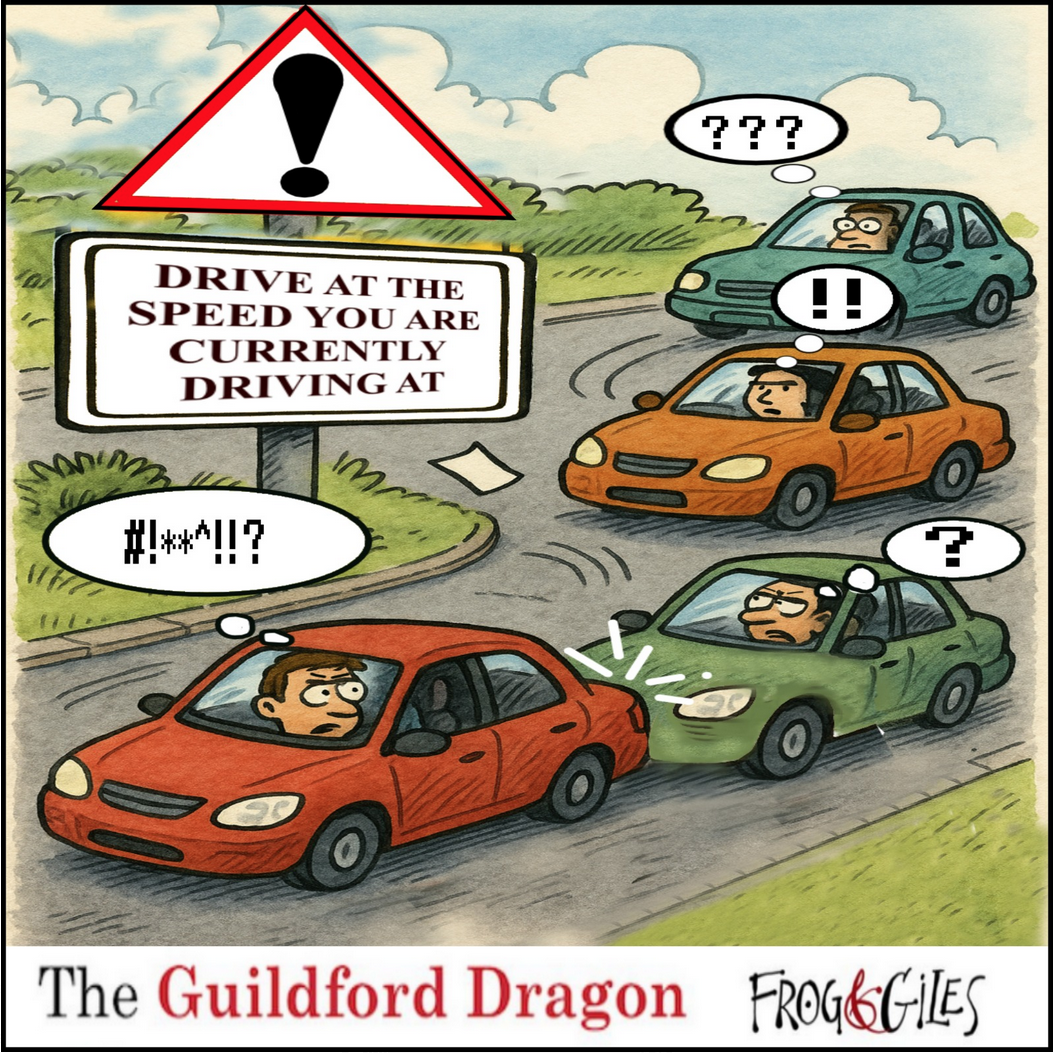
Click on cartoon for Dragon story: Public Asked for Views on SCC’s Proposal for Reduced Speed Limits



Recent Articles
- Letter: How Surveys of Public Opinion Should Be Organised
- Catapult Attacks, Shoplifting and Graffiti – the ASB Problem That Ash Is Facing
- A281 Closure Expected to Continue
- Guildford’s Green Day Shows Commitment to Net Zero by 2030 Remains
- Letter: We Should All Have a Say in How Our Local Government Is Reorganised
- Dragon Review: Madam Butterfly – Grange Park Opera
- Letter: PIP Claimants Under-claim
- Flashback: Council Report Accepts Juneja Case Has Caused ‘Reputational Damage’
- Revealed Survey Shows SCC’s Preferred Two-unitary Option Has Least Public Support
- Highways Bulletin: Junction 10 Closures and Making Strides for Walk to School Week


Recent Comments
- Anthony Williams on A281 Closure Expected to Continue
- Jules Cranwell on Flashback: Council Report Accepts Juneja Case Has Caused ‘Reputational Damage’
- Tony Harrison on Letter: Reduced Speed Limits Will Save Lives
- Tony Harrison on A281 Closure Expected to Continue
- Helena Townsend on Letter: Not All PIP Claimants Need It
- Patrick Bray on SCC Intends to Back Public Survey Result and Shorten Summer School Holidays
Search in Site
Media Gallery
Dragon Interview: Local Artist Leaves Her Mark At One of England’s Most Historic Buildings
January 21, 2023 / No Comment / Read MoreDragon Interview: Lib Dem Planning Chair: ‘Current Policy Doesn’t Work for Local People’
January 19, 2023 / No Comment / Read MoreA3 Tunnel in Guildford ‘Necessary’ for New Homes, Says Guildford’s MP
January 10, 2023 / No Comment / Read More‘Madness’ for London Road Scheme to Go Ahead Against ‘Huge Opposition’, Says SCC Leader
January 6, 2023 / No Comment / Read MoreCouncillor’s Son Starts Campaign for More Consultation on North Street Plan
December 30, 2022 / No Comment / Read MoreCounty Council Climbs Down Over London Road Works – Further ‘Engagement’ Period Announced
December 14, 2022 / No Comment / Read MoreDragon Interview: GBC Reaction to the Government’s Expected Decision to Relax Housing Targets
December 7, 2022 / No Comment / Read MoreHow Can Our Town Centre Businesses Recover? Watch the Shop Front Debate
May 18, 2020 / No Comment / Read More



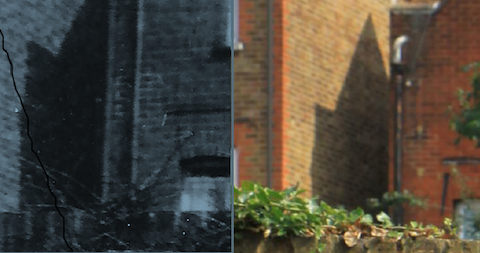

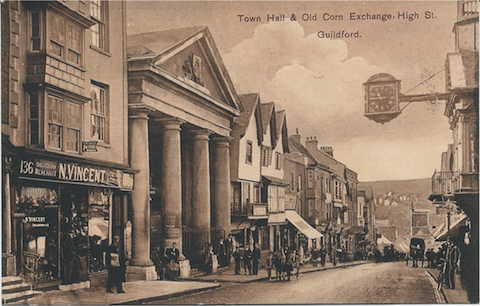
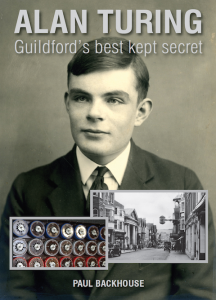



Mike Williams
September 6, 2016 at 4:32 pm
So much has been discovered from a photo and chance chat. Brilliant! The Guildford Chamber of Commerce was a strong influence throughout the 20th century, and I wonder if Vincent was a member. Who has the records?
Another long shot: my grandparents Arthur and Louis Williams were immersed in the life of Holy Trinity (and civic Guildford as well) and grandpa was churchwarden for a time too I believe.
Jules Cranwell
September 6, 2016 at 9:39 pm
Would it not be appropriate to erect a blue plaque at the spot, given Turing’s status as a national hero?
[Editor: There is a blue plaque commemorating Alan Turing on a house in Ennismore Avenue, off London Road, where the family lived for a time. There is a statute of him at the University of Surrey.]
Mary Bedforth
September 6, 2016 at 10:47 pm
Or even a statue!
http://s0.geograph.org.uk/geophotos/02/59/72/2597294_27a7c0e3.jpg